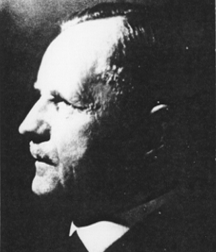


Ernst Schmidt was a German scientist and pioneer in the field of Engineering Thermodynamics, especially in Heat and Mass Transfer. He studied Civil and Electrical Engineering at Dresden and Munchen and joined the Laboratory for Applied Physics at the Technical University, Munchen, in 1919 (which was then under the direction of Oscar Knoblauch). One of his early research efforts there was a careful measurement of the radiation properties of solids, which caused him to propose and develop the use of aluminum foil as an effective radiation shield. In 1925, he received a call to come serve as Professor and Director of the Engineering Laboratory at the Technical University in Danzig. Here he published papers on the now well known "Graphical Difference Method for Unsteady Heat Conduction" and on "The Schlieren and Shadow Method" to make thermal boundaries visible and to obtain local heat-transfer coefficients. He was the first to measure the velocity and temperature field in a free convection boundary layer and the large heat-transfer coefficients occurring in droplet condensation. A paper pointing out the analogy between heat and mass transfer caused the dimensionless quantity involved to be called the "Schmidt Number." In 1937, he became the Director of the Institute for Propulsion of the newly founded Aeronautical Research Establishment at Braunschweig and Professor at the University there. In 1952, Schmidt occupied the Chair for Thermodynamics at the Technical University of Munchen which before him had been held by Nusselt. Being strongly involved in the development of the international steam tables, Schmidt continued his scientific activity after his retirement in 1961 and until his death in 1975. In recognition of his work, he received numerous honors and awards, including the Ludwig Prandtl Ring, the Max Jakob Award and the Grashof Commemorative Medal. |

All web page HTML © by Richard Culham
Most recent update: 28-03-04